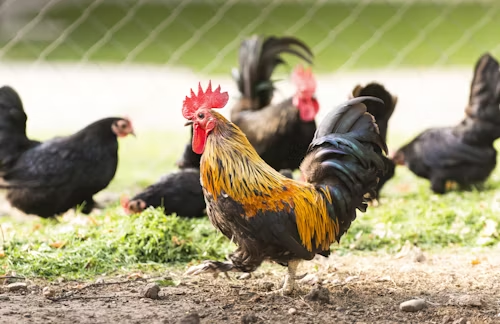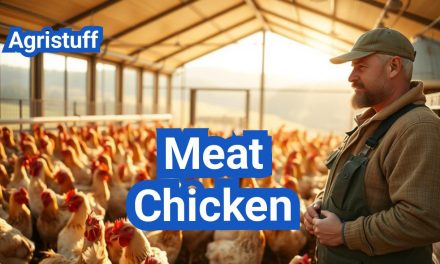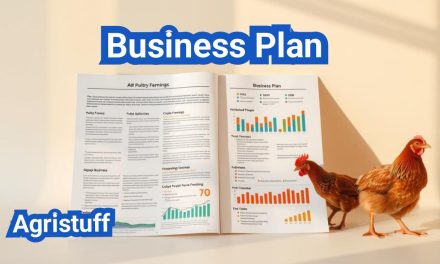What is a Poultry Farm? And How to Start Raising Chickens
Poultry farming has become a cornerstone of the global food industry, providing a steady supply of meat and eggs to meet the growing demand for protein. Whether you’re a beginner or an experienced farmer, understanding the basics of poultry farming is essential to running a successful operation. In this guide, we’ll explore what poultry farming is, its importance, the different types of farms, and how to start raising chickens effectively.
What is Poultry Farming?
Poultry farming involves raising domesticated birds such as chickens, turkeys, ducks, and geese for their meat, eggs, or feathers. It’s a versatile industry that ranges from small backyard setups to large commercial operations. The primary goal is to ensure the birds are healthy, well-fed, and productive, whether for egg-laying or meat production.
Why is Poultry Farming Important?
Poultry farming plays a vital role in food security, providing affordable and nutritious protein to millions of people worldwide. It’s also a lucrative business with relatively low startup costs compared to other types of livestock farming. Additionally, poultry farming supports the agricultural sector by creating jobs and boosting local economies.
Types of Poultry Farms
Poultry farms can be categorized based on their focus and scale. Here are the main types:
- Layer Farms: These farms specialize in egg production. Hens are raised in environments optimized for high egg output, with diets rich in calcium to support strong eggshells.
- Broiler Farms: These farms focus on raising chickens for meat. Broilers are bred to grow quickly, reaching market weight in just a few weeks.
- Free-Range Farms: Birds are allowed to roam outdoors, engaging in natural behaviors like foraging. This method is often preferred for its animal welfare benefits.
- Organic Farms: These farms avoid synthetic chemicals and prioritize sustainability. While more expensive to operate, they cater to health-conscious consumers.
Traditional vs. Modern Poultry Farming Techniques
Poultry farming methods have evolved over time, with traditional and modern techniques offering different advantages.
- Traditional Farming: Free-range systems allow birds to roam outdoors, promoting natural behaviors. While less intensive, this method is often seen as more ethical.
- Modern Farming: Industrial systems, such as battery cages and furnished cages, maximize production efficiency. However, they have faced criticism for animal welfare concerns.
Challenges in Poultry Farming
Running a poultry farm comes with its share of challenges. Here are some common issues and how to address them:
- Disease Management: Birds are susceptible to diseases like Avian flu and Newcastle disease. Regular vaccinations, strict hygiene, and prompt veterinary care are essential.
- Feeding: Proper nutrition is critical for bird health and productivity. A balanced diet rich in proteins, vitamins, and minerals ensures optimal growth and egg production.
- Farm Management: Efficient record-keeping, regular cleaning, and humane treatment of birds are key to maintaining a productive farm.
Best Practices for Successful Poultry Farming
To ensure your poultry farm thrives, follow these best practices:
- Choose the Right Breed: Select breeds that suit your goals (meat or egg production) and local climate conditions.
- Provide Proper Nutrition: Invest in high-quality feed and ensure birds have access to clean water at all times.
- Maintain Hygiene: Regularly clean coops and equipment to prevent disease outbreaks.
- Monitor Health: Conduct routine health checks and vaccinations to keep your flock healthy.
- Plan for Growth: Start small and scale up as you gain experience and resources.
How to Start Raising Chickens: A Step-by-Step Guide
Starting a poultry farm requires careful planning and preparation. Here’s how to get started:
- Prepare the Housing: Set up a clean, well-ventilated coop with proper temperature control. Ensure the space is safe from predators.
- Choose Your Birds: Decide whether you want to raise chickens for meat, eggs, or both. Select breeds that align with your goals.
- Source Chicks from Reputable Suppliers: Buy vaccinated chicks from trusted suppliers to avoid disease issues.
- Provide Proper Care: Keep chicks warm with heating lamps and ensure they have access to clean water and nutritious feed.
- Monitor Growth: Regularly check on your birds’ health and adjust feeding and care practices as needed.
5 Tips for Raising Chickens Successfully
- Select the Right Breed: Choose breeds based on your goals (meat, eggs, or both). For example, broilers grow quickly for meat, while layers are ideal for egg production.
- Determine Flock Size: Start with a manageable number of birds and expand as you gain experience.
- Invest in Quality Feed: Proper nutrition is key to healthy, productive birds. Use age-appropriate feed for chicks and adult birds.
- Maintain Cleanliness: Regularly clean coops and equipment to prevent disease.
- Plan for the Future: Develop a strategy for egg collection, bird sales, or meat processing.
Conclusion: The Rewards of Poultry Farming
Poultry farming is more than just a business—it’s a science that requires careful planning, dedication, and a deep understanding of bird care. By following best practices and staying informed about industry trends, you can build a successful and sustainable poultry farm. Whether you’re raising chickens for meat, eggs, or both, the rewards of poultry farming are well worth the effort.
Call to Action: Ready to start your poultry farming journey? Begin by researching local breeds, setting up your coop, and connecting with experienced farmers in your area. With the right knowledge and tools, you can turn your poultry farm into a thriving venture.










